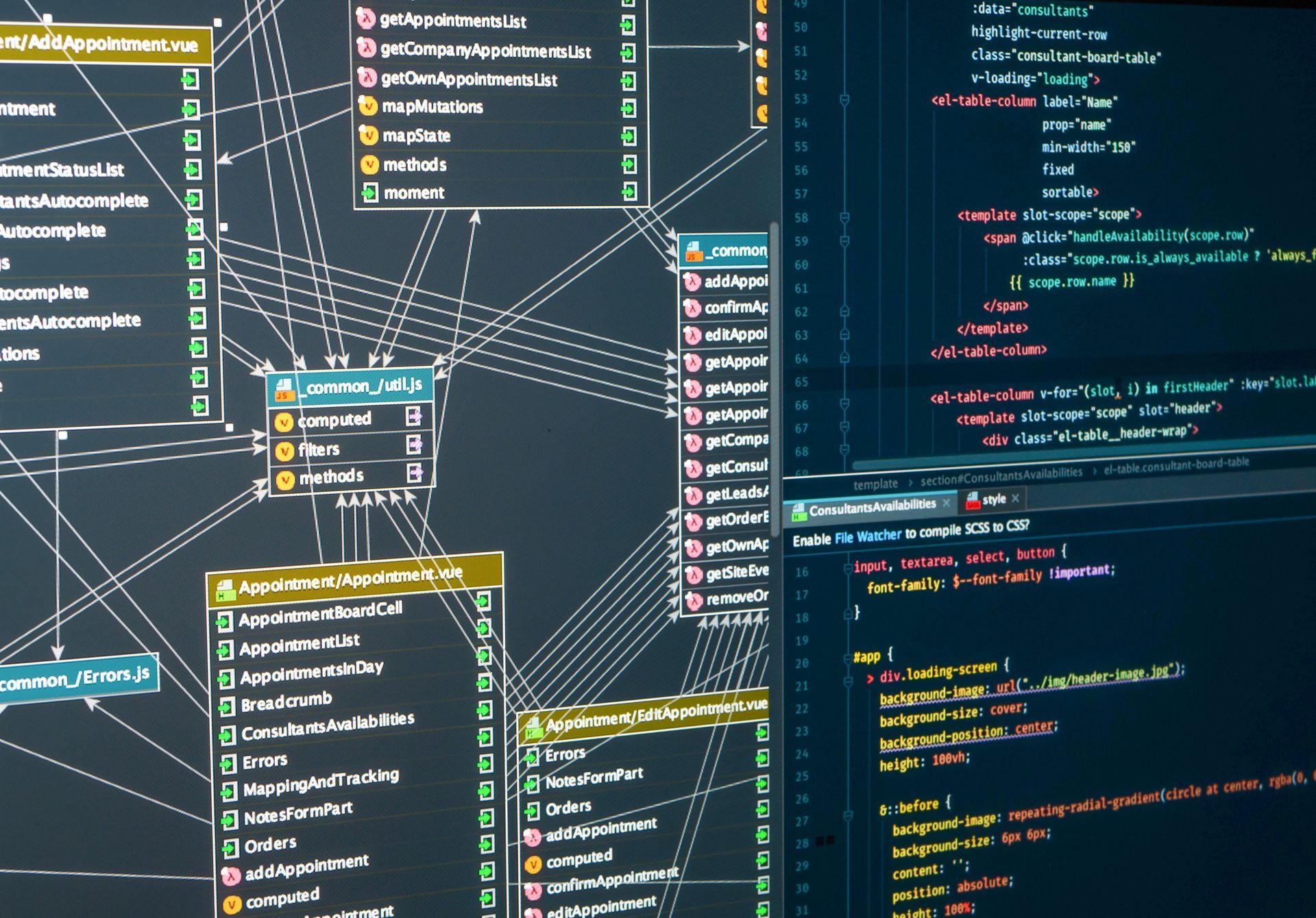What Are The 4 Types Of Database Management Systems?

Types of Database Management Systems ( DBMS)
There are several types of databases. Here is a list of seven common types of Databases:
- Hierarchical databases
- Network databases
- Relational databases
- Object-oriented databases
- Graph databases
- ER model databases
- Document databases
- NoSQL databases
What is Database Management System & Types?
A database management system is a collection of programs used to manage data, and simultaneously it helps different types of users create, manage, update, retrieve and store information.
However, there are different types of databases, each with their unique strengths and weaknesses. So, your choice will ultimately depend on the distinct needs of your organization.
Today, we’ll explain what are the 4 types of database and take a look at the benefits of using this system in general.
1. Relational Database
A relational database is a kind of database that stores and gives access to data points related to each other. It is based on the relational model and a precise data representation in tables. Each row in the table is documented with a particular ID called the key in a relational database.
The columns of the table have attributes of the data, and each record usually has a value for each attribute, making it easy to set the relationships among data points. Every table in a database has a mandatory field that identifies each record. This type of system is the most widely used database management system. A relational database management system is available for personal computers, large mainframe systems, and workstations.
Benefits of a relational database management system
Organizations of all kinds and sizes use the robust relational model for different information needs. Relational databases are used to track inventories, manage massive amounts of mission-critical customer information, and process eCommerce transactions.
A relational database can be used for any information needed in which data points connect and must be managed securely, rules-based, and uniformly. Relational databases have been around since the 1970s. Today, the benefits of the relational model continue to make it the most widely accepted model for databases.
The biggest advantage of these types of database is their simplicity. Multiple users can retrieve data using only simple SQL queries and since stored information is organized in the tabular format, nothing will ever be duplicated, ensuring consistency across all the tables.
Although relational databases have been around since the 1970s, they’re still the most widely accepted model for databases these days.
2. Object-Oriented Database(OOD)
Object-oriented databases(OOD) emerged to meet the need to couple object-oriented programming languages with a database. Object-oriented databases were created to meet the requirements of merging object-oriented programming languages with a database system. Since they are a combination of relational database concepts and object-oriented principles, there is less effort and minimal coding needed to maintain them.
Object-oriented databases have been around since the late 1970s. In recent years, they have seen a rather low adoption with the growth of functional programming languages and relational databases. However, the growing user community is awakening to its capacity to deliver fast queries with simpler code. OOD is a combination of relational database concepts and object-oriented principles. It needs less code and is effortless to maintain.
Object-Oriented Databases Cases
OODs are most generally used with object-oriented programming languages like Kotlin, C#, Node JS, Java, and Swift. Industries that use OODs usually are built on an object-oriented language and want to increase productivity while working with complex data structures.
3. Hierarchical Database
As the name implies, the hierarchical database model is most suitable for use cases. The primary focus of information assemblage is based on a definite hierarchy, such as several respective employees reporting to a single department at a firm.
The primary focus of information assemblage in hierarchical databases is based on a definite hierarchy. As such, it’s useful in situations where multiple people have to report to a single point. For instance, several employees reporting to a single department at a firm.
The schema for these types of database is similar to a tree. There is a root “parent” directory of data stored as records that links to other subdirectory branches. Each subdirectory branch may then link to various other subdirectory branches.
The hierarchical database structure dictates that, while a parent record can have many child records, each can only have one parent record. Data within records are held in the form of fields, and each field can only hold one value. Regaining hierarchical data from a hierarchical database architecture needs traversing the entire tree.
Benefits of the hierarchical data model
Due to its organizational structure, the hierarchical database model allows users to quickly add and edit information. Management is further simplified as the data at the top of the hierarchy is accessed within seconds.
Example of a hierarchical model
A record in the hierarchical database model coordinates to a row in the relational database model, and any entity type coordinates to a table.
The hierarchical database model demands that each child record has only one parent, but each parent record can have one or more child records. The whole tree should be traversed starting from the root node to retrieve data from a hierarchical database. The hierarchical model is recognized as the first database model created in the 1960s by IBM.
The Hierarchical Data Model is a method of organizing a database with numerous one too many relationships. The structure is based on the regulation that one parent can have many children, but children are permitted only one parent. This structure lets information be repeated through the parent-child relations developed by IBM and was executed mainly in their Information Management System.
Network database
A network database is a model wherein numerous member records or files can be connected to multiple owner files and vice versa. The model can be regarded as an upside-down tree where each member’s information is the branch linked to the owner, which is the bottom of the tree. Relationships are in a net-like form where each element can point to multiple data elements and be pointed to by multiple data elements.
The network database model permits each record to have multiple parent and multiple child records, which, when pictured, form a web-like structure of networked records. In contrast, a hierarchical model data member can only have a single parent record but can have many child records.
This multiple-lit method applies in two ways: the schema and the database can be seen as a generalized graph of record types connected by relationship types. The primary advantage of a network database is that it allows for a more natural modeling of relationships between records or entities instead of the hierarchical model. Nevertheless, the relational database model has started to win over both the network and the hierarchical models. Its added flexibility and productivity have become more evident as hardware technology has become faster.
Benefits of a network database
The primary advantage of a network database is that it allows for more natural modeling of relationships between records or entities compared to the hierarchical model. To put it differently - it’s possible to have a higher amount of general connections between nodes.
Non-relational database
While the most widely used database is the relational model, other types of database are slowly seeing more use - mainly non-relational databases (also known as NoSQL databases). This model has a completely different organizational structure. Instead of tables, rows, and primary keys, NoSQL databases use storage models optimized for specific data requirements.
Benefits of non-relational databases
Data in these databases is easier to understand as it’s kept in an intuitive fashion. For instance, storing information using noSQL APIs will require fewer transformations since the format of storage is similar to the way applications themselves store data.
More importantly, when using No
SQL databases in a cloud environment, there is practically zero downtime.
Relational database vs. non-relational
Which one is better will depend purely on the needs of your organization. Relational databases are good transactional-type applications as the relationships in the data have constraints, providing more data integrity. Additionally, data transactions are secure and indexing capabilities are almost limitless, meaning the query response times will always be quite fast.
On the other hand, non-relational databases can store large amounts of unstructured data and provide schema-on-read or schema-free capabilities. This means they are flexible and scalable, perfect for storing flexible data during complex processes such as rapid application development.
As you can see, these two are completely different beasts that excel in their use cases.. Make sure to first analyze the needs of your organization and the application functionality you need to achieve, and only then choose the type of database you want to implement.
Advantages of a database system
Most types of databases provide a centralized view of data, thus allowing teams to keep track of everything, including who is accessing the data and where they’re accessing it from.
In other words, your organization will gain an advantage of effective data integration, improved data sharing, and a stronger implementation of privacy and security policies.
It’s also worth noting that deploying a database management system increases organization-wide productivity. This is because everyone involved is empowered to spend more time on tasks that matter instead of scrubbing lists or cleaning data.
1. DBMS offers various techniques to store & retrieve data
2. Uniform administration procedures for data
3. Application programmers are never exposed to details of data representation and storage.
4. A DBMS uses different powerful functions to store and retrieve data efficiently.
5. A DBMS schedules concurrent access to the data so that only one user can access the same data at a time.
6. The DBMS indicates integrity constraints to get a high level of protection against prohibited access to data.
When not to use a DBMS system?
Even though DBMS systems are helpful, they’re still not recommended for organizations that don’t have the budget or the expertise to successfully operate such a system. For data storing and indexing purposes without many bells and whistles (yet wallet-friendly), Excel, CSV, or Flat Files may be the better-suited options.
FAQs
Disclaimer: The information on this website and blog is for general informational purposes only and is not professional advice. We make no guarantees of accuracy or completeness. We disclaim all liability for errors, omissions, or reliance on this content. Always consult a qualified professional for specific guidance.






